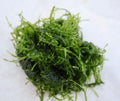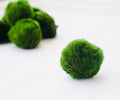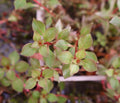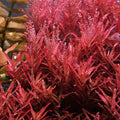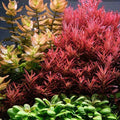Top 5 Moss in Aquarium and How to Grow Them
Top 5 Moss in Aquarium and How to Grow Them

Moss is recognized as one of the simplest aquarium plants to grow in the fish tank hobby since it does not need high light levels or additional fertilizers! When tied to driftwood and rocks, aquarium moss may offer depth and a beautiful natural appearance to your aquascape.
What are the top 5 easiest aquarium moss to grow?
Many types of aquarium moss can grow without any changes to the water or lighting. However, some of the simplest mosses can grow slowly, which can be annoying if you want to make a thick jungle in your tank quickly.
Here are some types of moss to think about, depending on how much time you have, what you like, and how your tank is set up.
Mini Marimo Moss Ball

When you initially get your marimo ball, rinse it with aquarium water before placing it in the tank. It may float at first, but after it gets wet, it should sink. Keep them out of direct sunlight since they like low to medium light.
Marimo balls develop slowly, up to 5 mm every year, eventually reaching a size of 2 to 5 inches in aquariums or 8 to 12 inches in the wild. Wild marimos dwell in cold, dark seas where the waves spin them gently, exposing all sides to the light. They must be maintained inside in clean, cool water with minimal lighting.
Replace the water every few weeks, and more often in the summer when water evaporates fast. Regular tap water is OK, but allow it to settle for 24 hours beforehand. Agitate the water from time to time so that the moss balls aren't constantly sitting on the same side. The movement will promote circular, equal growth.
"Vesicularia Ferriei" Weeping Moss

Keeping mosses in your aquarium cold is the best way to encourage them to look good and develop quickly. Some aquatic mosses, on the other hand, have been shown to be able to adapt to somewhat higher temperatures. Some mosses may grow in a wide variety of temperatures with no obvious damage to themselves.
The most basic method for growing weeping moss is to clip off sections of the moss and transplant them to other suitable locations in the tank for establishment.To assist moss, latch on to new spots, secure fresh cuttings using cotton thread or super glue.
Taxiphyllum "Flame" (Flame Moss)

Flame moss (Taxiphyllum 'Flame') is distinguished by its distinctive growth pattern. Aquascapers like this moss for its ability to add a crisp green touch of flora to any tank. Because of its unusual look, it is one of the most popular mosses in the aquascaping hobby. Flame moss is a popular ornamental plant in aquariums.
Flame moss is ideal for any aquarist since it grows readily in a variety of aquarium environments. This moss does not need a particular substrate or hardscape to grow. It is also popular because of its minimal care needs. Flame moss grows connected to plants in slow-moving rivers in its native environment.
Flame moss is relatively easy to care for and can grow in a well-kept aquarium with little special care. Just remember to keep the water in your aquarium clean to minimize algae buildup, which may be lethal to flame mosses.
Christmas Moss

Christmas moss is a rather slow growing plant with a slow developing root structure. That is, you should secure it to some driftwood or rocks.
The most critical consideration is light: unlike its relative, Java moss, this species does not thrive in low-light environments. Medium light will suffice, but anticipate slower development than with brighter bulbs.
If you mixed it, you should observe little patches of moss developing after 3–4 weeks, or tendrils spreading if you used clumps. And after 8 weeks, you should have a considerably thicker moss carpet.
Java Moss

Java moss is one of the simplest plants to cultivate. This moss is robust, adaptable, and aesthetically pleasing. It will undoubtedly bring a splash of green to your tank. It would take twice as much effort to kill this moss as it would to keep it alive!
It usually takes 3–4 weeks for Java moss to completely grow when you connect it to your tank and secure it. Java moss may grow 2–3 millimeters per day if properly trimmed. Every 1-3 days, this species reproduces. A three-inch patch plant, for example, may double in size in one month.
Java moss does not need a lot of light to flourish. It will thrive in low-light environments, much as Java fern or anubias. More light causes it to grow quicker, but it also makes it easier for algae to thrive.
Conclusion
Aquarium moss is an excellent plant for both novice and experienced aquarium owners. Moss is recognized as one of the simplest aquarium plants to manage in the fish tank hobby since it does not need high light levels or additional fertilizers!
When tied to driftwood and rocks, aquarium moss may offer depth and a beautiful natural appearance to your aquascape. Moss, when left free-floating, also serves as an excellent hiding and foraging habitat for fish and shrimp.



